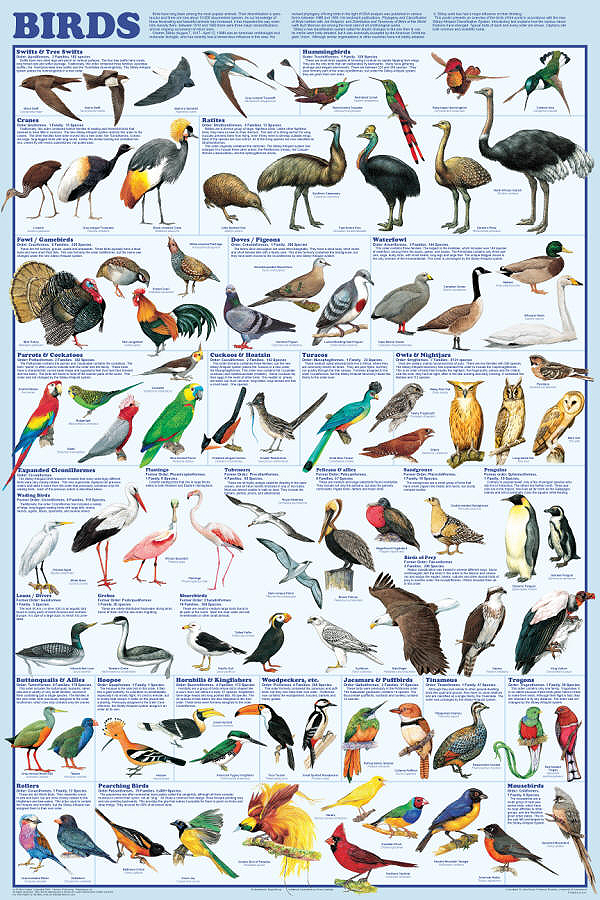|
|
|
Bird Orders - biological groups |
|
 |
|
A152 Birds
This is an
especially important poster because it presents the new
Sibley-Ahlquist bird classification system.
Based on recent DNA studies, it uses cladistics to
reconstruct the evolutionary family tree. Who would have
thought that birds as diverse as flamingos, eagles and
penguins would end up in the same clade? However, this
revolutionary new system has been widely accepted by North
American ornithologists, and has made the previous bird
classification system obsolete. Although this poster shows
true clades, the scientific community continues to use the
order names, which are cited.
This is a truly beautiful poster, one greatly appreciated by bird
lovers. It certainly enhances the decor of their home or
office, yet it presents information that has even greater
value. All the bird clades are explored, and all of the many
classification changes resulting from the transition from
orders to clades are explained. This information has never
before been published in such a concise and convenient form,
making this poster an essential reference for anyone
seriously interested in birds. |
| Laminated |
No. A152L |
$18.95 |
|
| Non-Laminated |
No. A1528F |
$9.95 |
|
|
|
Vertebrate Orders |
|
|
|
This is one of the four posters in our
vertebrate orders set. They provides a comprehensive
overview of the living vertebrates. Animal life is now
undergoing the transition from the Linnaeus classification
system to the new cladistic classification system. Birds
have been reclassified under the new system. There have been
many systems proposed for the other animals, but none has
been widely accepted. This required that the posters present
the animals in the context of their existing Linnaeus
orders. Each of these posters present all of the orders
within the group. There are so many marsupials and
cartilaginous fish that they are presented as super orders.
Each order is introduced by the common name or names (such as
whales, dolphins and porpoises), followed by the biological
name (Cetacea), the number of species, and a brief
description. A great many representational animals are
beautifully shown, all identified by both common and
biological names.
This is the first time that a comprehensive overview of this enormous and
complex subject has ever been presented on posters. This set
is invaluable for life science classes and anywhere else
that the study of animals takes place.
|
|
|